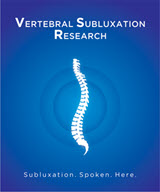New Research Sheds Light on Chiropractic and Balance

Recent research reported in the Annals of Vertebral Subluxation Research on a 65-year-old man with balance, gait, and coordination challenges reveals chiropractic may play an important role in managing these patients. The literature included supports the role of chiropractic in those suffering from related health challenges and calls for more research in this area. “Research is revealing that there is a relationship between abnormalities in the spine, the nervous system and brain” stated Dr. Matthew McCoy, a chiropractor, public health researcher and editor of the journal that published the study. “Basic science research shows that the proper functioning of the brain relies on proper structure and movement of the spine from an early age.”
CLICK HERE to review the study
Research has shown not only that the brain relies on normal structural integrity and joint movement, but that complex neurological communication and pathways involved in helping humans balance and orient themselves in space are tied into spinal biomechanics and their related neurological pathways.
“It makes perfect sense when you think about it” stated Dr. McCoy. “Coordination and balance disorders may be related to how the entire body communicates with the brain and the most critical area for this is the spine.”
According to McCoy “People’s nervous systems need the constant stimulation of movement in order to develop and function properly. Abnormal position or movement of the spinal vertebra can develop and this can lead to nerve interference. It is this interference, called vertebral subluxations, that chiropractors correct.”
The 65-year-old male in this study had complaints of “unsteadiness on his feet” and issues with overall movement. He was no longer able to take dance lessons or bowl weekly. His balance and coordination issues were significantly impacting his quality of life; even going to the grocery store had become difficult as he had to use the cart to maintain his balance with shopping. Getting dressed required more time and he avoided some public areas due to fear of falling. He was taking medication for high blood pressure. He had not received any definitive answers about his balance issues from his medical team.
The chiropractor examined him and found posture changes and structural shifts in his neck, mid back, shoulders, and low back. Forward bending caused him to lose balance and he was not able to take more than two steps upon tandem walking. Range of motion, sensation testing, orthopedic testing, and thermal scans confirmed the findings. These structural shifts can lead to obstruction of the nerves and it is this obstruction, called vertebral subluxations, that chiropractors correct.
Following chiropractic care, he experienced improvement in gait, balance, and coordination. He was able to complete testing on his follow up exam that was too difficult at the initial exam. His tandem walking improved to eight steps and sensation returned to his feet.
The study’s author called for additional research to investigate the clinical implications of chiropractic in this population.
Contact Information:
Matthew McCoy DC, MPH
Annals of Vertebral Subluxation Research
https://www.vertebralsubluxationresearch.com/vertebral-subluxation-research-1/
support@vertebralsubluxationresearch.com

Research News
- The 19th International Research and Philosophy Symposium (IRAPS): Bridging Philosophy, Science, and Practice in Chiropractic
- New Study Uncovers the Broad Systemic Benefits of Chiropractic Care on Nervous, Endocrine, and Immune Systems
- The Hidden Power of the Spine: How Vertebral Subluxation Impacts Health Through Systems Biology
- New Study Sheds Light on Vertebral Subluxation and Systems Biology
- Understanding Cervical Spine Movement and Motor Vehicle Accidents













